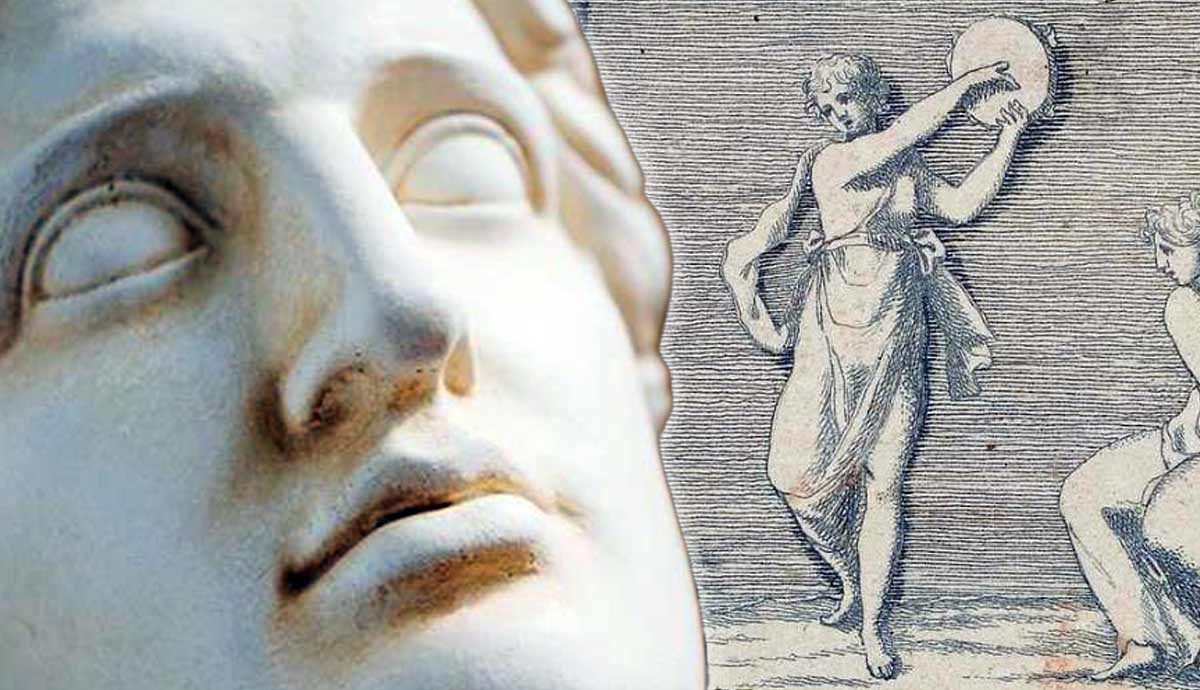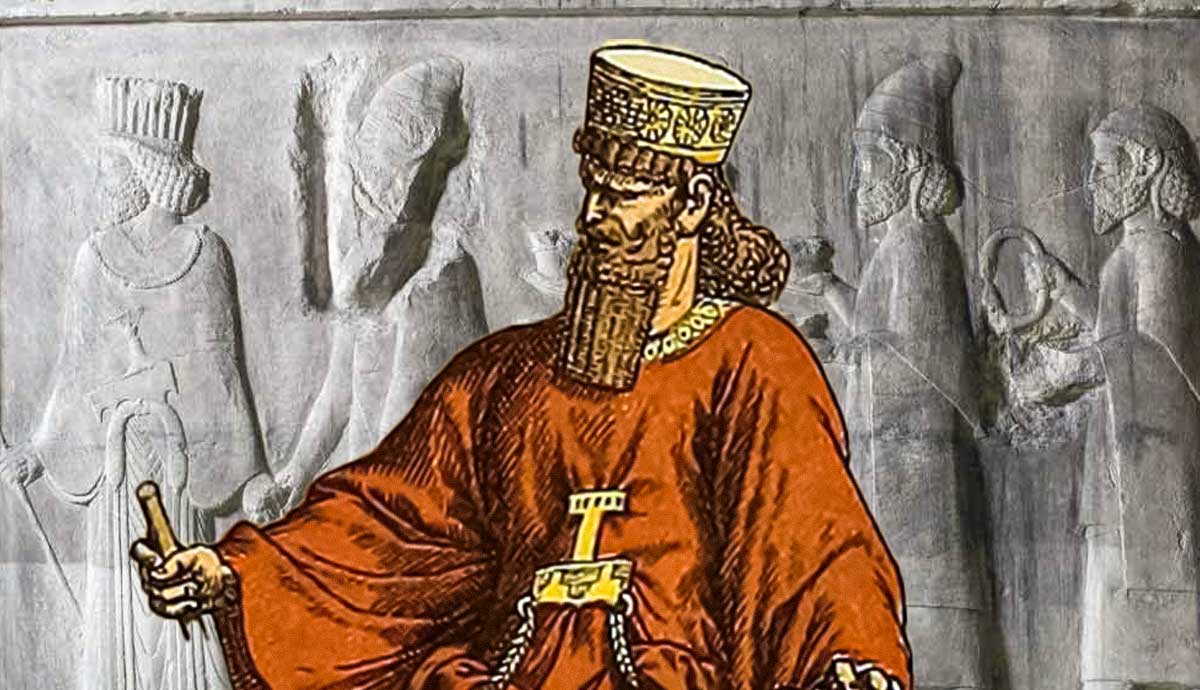
The Celtic people, who occupied large areas of Europe during the Iron Age, have left their mark across the landscape. Surviving Celtic sites include villages, sanctuaries, burial mounds, and natural wonders considered sacred. This article looks at ten of the most important Celtic sites across Europe for which remains survive and discusses who inhabited these sites and why they were considered important.
1. Hallstatt, Austria

Historians of Celtic culture often consider Hallstatt to be the “cradle” of Celtic civilization. Hallstatt was a lakeside village built around a rich salt mine. The village and the adjoining lake, Hallstattersee, derive their names from the Celtic word “hal,” meaning “salt.”
The village itself was situated in a larger salt-mining region known as Salzkammergut. In the later half of the 19th century, a team of archaeologists from the Academy of Sciences in Vienna undertook excavations at Hallstatt and uncovered more than 2,000 graves, which contained both cremated and interred remains. Alongside these remains were rich caches of weapons, jewelry, and other artifacts.
These finds, combined with the centrally located salt mine, indicate to archaeologists that the region was a rich hub of trade during its peak, and that it was a significant site for the people living in and around it.
2. Roquepertuse, France

Roquepertuse was a Celtic religious center, active from at least the third century BCE until it was destroyed by Romans in 124 BCE, However, some of the objects found there have been dated to as far back as the sixth century BCE.
Archaeologists originally speculated that the site was solely used for ritual purposes, but the latest findings suggest that the site served many purposes, with a portion being a sanctuary. The site is best known as evidence for the Celtic practice of the collection and display of human heads, and the use of the human head for ritual purposes.
Objects found at the site include pillars that feature carved human faces, niches for the display of heads or skulls, seated warrior statues, and a bicephalic sculpture, now on display at the Musée d’Histoire de Marseille.
3. Entremont, France

Entremont was an Iron Age oppidum and the capital of the Celtic Saluvii people. Oppida was the name for fortified hilltop settlements in continental Europe during this time. It was settled between 180-170 BCE, but was abandoned when it was sacked by Romans in 123 BCE and replaced by Aquae Sextiae, a Roman city.
Entremont is another key site for the study of the Celtic cult of the head. Sculptures discovered there depict seated warriors, at least one of which holds what appears to be a “trophy nest” of several sculpted, presumably severed, heads. The site has gone through an extensive restoration process, and its finds are currently housed in the Musée Granet.
4. Glauberg, Germany

Glauberg is a Celtic oppidum in Germany that was initially settled as early as the late Stone Age. It was evidently utilized by Celts due to the presence of multiple “princely” burial mounds that date to around the fifth century BCE. The artifacts contained in the burials suggest that highly important members of society were buried there.
The site has proven important for archaeologists analyzing shifts in Celtic customs and styles between the Hallstatt (c. 800-450 BCE) and La Tène (c. 450-1 BCE) cultures, such as differences in funeral practices like inhumation versus cremation.
The site’s locations on a hilltop made it attractive to a variety of peoples from the Neolithic period onward. Archaeologists believe that it was initially settled c. 4500 BCE by people of the Rössen culture, followed by a large settlement during the Michelsberg phase, c. 4000 BCE. It was settled by people of the Urnfield culture c. 1000-800 BCE, which is often considered a proto-Celtic culture, before presumably becoming a regional center of importance for the Hallstatt Celts.

That there were figureheads buried at Glauberg, whether they were warriors, princes, or both, suggests that the site was the seat of Celtic leadership at the time. Included in the finds excavated from Glauberg was a life-sized statue of a Celtic ruler, believed to represent one of the individuals buried there. Full-sized statues depicting individuals are extremely rare in Celtic art, making this a unique find.
5. Vix, France

Vix is the site of another important Celtic burial, and dates to the sixth century BCE. Archaeologists believe that the individual buried there was important due to the quality of the excavated finds and the burial’s proximity to another chiefly burial. The grave has been identified as belonging to a woman, called the Princess of Vix. This suggests that Celtic women were able to accumulate power and wealth in at least some parts of the Celtic world.
The grave contained exceptional examples of jewelry such as a large gold diadem and gold torque, a neck ring that served as a status symbol for both men and women during this period, both of which indicate Hallstatt Celtic preferences for jewelry and adornment.
The grave also contained an object now known as the Vix krater, which was used for holding wine. This object signifies not only that the Celts were incorporated into a larger Mediterranean trade network during the Hallstatt period. It also suggests the elite Celts consumed wine and valued the commodity sufficiently to use it as a burial good.
6. Lake Neuchâtel, Switzerland

On the northern shore of Lake Neuchâtel lies the archaeological site of La Tène, where the first La Tène type objects were excavated in the 19th century. Archaeologists named one of the most significant phases of Celtic culture after this site and the finds. The term La Tène generally refers to the period from c. 450-1 BCE, as well as the art style and cultural characteristics of the Celtic peoples during this time.
The excavations were initiated by a Swiss archaeologist named Hans Kopp in 1857 when he uncovered a number of items, including at least 40 swords, on the northeastern shore of the lake. Since then, over 2,500 objects from the Iron Age have been discovered in the lake’s waters. Because of the sheer number of objects that were deposited there, the lake was clearly the site of some kind of ritual deposition during the Iron Age.
Celtic peoples believed that lakes, and other natural elements, contained spirits or deities that had the power to bless the surrounding land with prosperity. Water also held associations with spiritual renewal. Because of this, and the frequency of object deposition in watery sites, archaeologists believe that sites like Lake Neuchâtel were sacred, and that the objects left in them were offerings.
7. Stonehenge, England

Contrary to popular belief, Stonehenge was not originally a Celtic site. Rather, the site was constructed over many years by Neolithic and Bronze Age peoples living in Britain. The first monument, an early henge monument, was built about 5,000 years ago. The stone circle was constructed c. 2500 BCE in the late Neolithic period. Several burial mounds on and around the site date to the early Bronze Age.
The fact that the site was not original to the Brythonic Celts does not diminish the ritual significance that it has held at that time. The unique layout of the stone circle is designed in relation to the solstices and the movements of the sun. The site likely originally served as a place of worship and celebration of solar and natural deities on the solstices. This certainly carried over to Celtic religious practices, particularly the practices of the Druids of Roman Britain. Recent excavations have uncovered objects of Roman and Romano-British origin on the site.
Additionally, Stonehenge was recognized as a site of importance during the medieval period, and there are increasing written and visual references made to Stonehenge from the 14th century onward.
8. Newgrange, Ireland

Newgrange, like Stonehenge, is another site that is often associated with the Celts but was created by the Neolithic inhabitants of Ireland. It dates to c. 3200 BCE and was constructed by a farming community that prospered in the Boyne Valley, in which it is located. The monument takes the form of a large mound that contains a passage and a chamber with three alcoves.
Similar to Stonehenge, the passage was designed to align with the movements of the sun on the Winter Solstice. The site was evidently used as a place of spiritual and ceremonial worship on the Winter Solstice by its Neolithic creators and visitors, but it is not entirely unreasonable to suggest that Celtic peoples would have utilized it for the same purposes centuries later.
The first evidence of Celtic tribes living in Ireland dates to c. 500 BCE, thousands of years after the site was constructed. The site, however, was believed to have been the resting place of the chief god Dagda in Celtic mythology, so it was certainly significant to them.
The famed Newgrange entrance stone also lends itself to the site’s modern-day associations with the Celts. It features a triple spiral pattern that is very similar to the Celtic triskele or triskelion, one of the most frequently repeated symbols in Celtic art. As a Celtic symbol, the triskele has many meanings. It can symbolize life cycles, rebirth, infinity, and more. It later found significance in the Celtic Christian church as a symbol for the Holy Trinity.
9. Hill of Tara, Ireland

The Hill of Tara is a key site in Irish history and mythology. Its importance dates to the late Neolithic period when a passage tomb known as Dumha na nGiall, or “the mound of the hostages,” was built there. It is believed to have risen to prominence during the Iron Age and early medieval periods as the legendary coronation site and seat of the High Kings of Ireland.
Regarding Tara’s use throughout history, it is difficult to distinguish between myth and fact. The site is mentioned frequently in Irish legend, but archaeology suggests there were no permanent structures such as palaces on the hill that would have made it the residence of the Irish Kings.
The site contains Rath na Rí, the “fort of the kings,” a bank that encircles the hill and its main monuments, and the Lia Fáil, “stone of destiny,” the inauguration stone of the kings. According to legend, when a true Irish king stepped on the stone it would cry out to announce his rightful reign. Saint Patrick is even believed to have visited the site when he lit his Pascal fire in defiance of the pagan Celtic king of Tara.
10. Rivers: The Thames, The Seine, and More

Like Lake Neuchâtel and other lakes that Celtic peoples believed to be divinely inhabited, rivers were important features of the natural landscape. The Celts thought they contained spirits or deities that could be prayed to for prosperity in the region. Important rivers included the rivers Thames and Wharfe in Britain, the rivers Boyne, Shannon, Inny, Odras, and Érne in Ireland, and the rivers Seine, Saône, Yonne, and Marne in France.
These rivers were important not only for practical reasons, as they served as a natural resource for the communities living around them, but also for religious purposes. As discussed above regarding Lake Neuchâtel, rivers held ritual importance both because of their presiding deities and because of water’s long-held associations with spiritual renewal. The Celtic river-goddesses held associations with wisdom, healing, and motherhood, as well as the cycle of life and death.
Archaeologists have found many Iron Age objects, like the Battersea Shield shown above, in rivers that suggest that they were used as spaces of ritual offering and were considered sacred.










